How Does Precision CNC Machining Improve Waveguide Transition Performance?
In the demanding world of microwave technology, the performance of waveguide transitions directly impacts system efficiency, signal integrity, and overall operational reliability. Precision CNC machining has emerged as a transformative manufacturing approach that significantly enhances waveguide transition performance through superior dimensional accuracy, surface finish quality, and consistent repeatability. This advanced manufacturing technique enables the production of complex geometries with tolerances measured in micrometers, ensuring optimal electromagnetic performance across diverse frequency ranges from traditional microwave bands to cutting-edge millimeter-wave applications extending up to 110 GHz.Precision CNC machining revolutionizes Waveguide Transition manufacturing by delivering exceptional dimensional control that directly translates to improved electrical performance. Through computer-controlled multi-axis machining centers, manufacturers can achieve surface roughness values below 0.2 micrometers Ra, virtually eliminating signal losses caused by surface irregularities. The technology enables the creation of complex internal geometries, smooth transitions between different waveguide sizes, and precise flange interfaces that ensure reliable connections. This manufacturing precision becomes particularly critical in high-frequency applications where even microscopic imperfections can cause significant signal degradation, standing wave ratio increases, and power handling limitations that compromise overall system performance.
Enhanced Dimensional Accuracy Through Advanced CNC Techniques
Micro-Tolerance Manufacturing for Critical Waveguide Geometries
Precision CNC machining achieves dimensional tolerances of ±0.001 inches or better, which proves essential for Waveguide Transition performance optimization. These tight tolerances ensure that internal waveguide dimensions match theoretical specifications exactly, maintaining characteristic impedance consistency throughout the transition. Advanced five-axis CNC machines can simultaneously control multiple cutting parameters while maintaining workpiece positioning accuracy within micrometers. This level of precision becomes particularly important when manufacturing transitions between different waveguide standards, such as WR-90 to WR-62 transitions, where dimensional accuracy directly affects voltage standing wave ratio (VSWR) performance. The water-cooled twist waveguide produced by Advanced Microwave exemplifies this precision, incorporating cooling channels that require exact positioning to maintain thermal management effectiveness without compromising electromagnetic performance. Modern CNC systems utilize real-time measurement feedback loops that continuously monitor cutting tool positions and automatically compensate for thermal expansion, tool wear, and machine deflection effects that could otherwise introduce dimensional variations.
Surface Finish Optimization for Signal Integrity
The surface finish quality achieved through precision CNC machining directly impacts Waveguide Transition electrical performance by minimizing conductor losses and preventing unwanted electromagnetic reflections. Advanced CNC techniques can produce internal waveguide surfaces with roughness values as low as 0.1 micrometers Ra, approaching mirror-like finishes that significantly reduce ohmic losses at high frequencies. This surface quality becomes increasingly critical as operating frequencies extend into millimeter-wave ranges, where skin depth effects make surface conditions more influential on overall performance. Specialized cutting tools designed for non-ferrous metals like copper alloys enable manufacturers to achieve these superior surface finishes while maintaining dimensional accuracy throughout the machining process. The integration of high-pressure coolant systems during machining operations further enhances surface quality by preventing built-up edge formation on cutting tools and ensuring consistent chip evacuation from complex internal geometries. Advanced Microwave's water-cooled twist waveguide benefits from these precision surface finishing techniques, ensuring optimal electromagnetic transmission performance while maintaining effective heat dissipation through precisely machined cooling channels.
Complex Geometry Realization with Multi-Axis Machining
Multi-axis CNC machining capabilities enable the production of complex Waveguide Transition geometries that would be impossible or extremely difficult to achieve using traditional manufacturing methods. Five-axis machining centers can simultaneously control linear and rotary axes to produce twisted waveguide sections, compound angle transitions, and integrated cooling passages in single setups without repositioning workpieces. This capability eliminates potential alignment errors that could occur with multiple-setup operations while ensuring geometric consistency throughout complex transition designs. The ability to machine undercuts, internal features, and non-perpendicular surfaces opens new possibilities for waveguide transition design optimization, allowing engineers to create smooth impedance transformations that minimize reflections and maximize power transfer efficiency. Advanced CAM software packages specifically designed for RF component manufacturing can automatically generate optimal tool paths that maintain consistent surface finish quality while minimizing machining time and tool wear. The customizable twist angle capabilities offered by Advanced Microwave, typically 45° or 90°, demonstrate how multi-axis machining enables flexible design solutions that can be tailored to specific application requirements while maintaining manufacturing precision and repeatability.
Superior Material Properties and Thermal Management
Advanced Copper Alloy Processing for Enhanced Performance
Precision CNC machining of specialized copper alloys results in Waveguide Transition components with superior electrical and thermal properties compared to conventional manufacturing approaches. Modern CNC machines equipped with high-speed spindles and advanced cutting tool geometries can process high-conductivity copper alloys while maintaining their inherent electrical properties throughout the manufacturing process. The controlled cutting environment prevents work hardening and microstructural changes that could degrade electrical performance, ensuring that finished components retain the full benefits of carefully selected copper alloy formulations. Advanced Microwave's water-cooled twist waveguide utilizes precisely machined copper alloy construction that maintains excellent electrical conductivity while providing the mechanical strength necessary for high-power applications. Specialized cutting fluids and optimized machining parameters prevent copper smearing and built-up edge formation that could compromise surface quality and dimensional accuracy. The precision achievable with CNC machining also enables the integration of complex cooling channel geometries directly within the waveguide structure, eliminating the need for separate cooling components that could introduce interface losses or mechanical complexity.
Integrated Cooling System Design and Manufacturing
The integration of cooling systems within Waveguide Transition components requires precise CNC machining capabilities to create internal flow passages that provide effective heat dissipation without compromising electromagnetic performance. Advanced three-dimensional cooling channel designs can be directly machined into waveguide walls, creating efficient heat transfer paths that maintain structural integrity and electrical performance. The water-cooling system featured in Advanced Microwave's twist waveguide demonstrates how precision machining enables the creation of optimized coolant flow patterns that maximize heat removal efficiency while minimizing pressure drop and pumping power requirements. CNC machining allows for the creation of variable cross-section cooling channels that can be tailored to match heat generation patterns within the waveguide structure, providing targeted cooling where it is most needed. The precision achievable with modern CNC equipment ensures that cooling channel positioning maintains adequate wall thickness for structural integrity while maximizing cooling effectiveness. Advanced finite element analysis software can be integrated with CNC programming systems to optimize cooling channel geometries for specific power handling requirements and environmental conditions.
Corrosion Resistance and Long-Term Reliability
Precision CNC machining techniques contribute to enhanced corrosion resistance in Waveguide Transition components by eliminating surface defects and stress concentrations that could serve as corrosion initiation sites. The superior surface finish achievable through precision machining creates a more uniform protective oxide layer on copper and aluminum surfaces, improving long-term environmental resistance. Advanced CNC machining can also accommodate specialized surface treatments and coatings that further enhance corrosion resistance without compromising dimensional accuracy or electrical performance. The controlled machining environment prevents contamination that could lead to galvanic corrosion issues when dissimilar metals are used in waveguide assemblies. Advanced Microwave's RoHS compliant manufacturing processes ensure that precision-machined components meet environmental standards while maintaining long-term reliability in demanding applications. The elimination of sharp edges and stress concentrations through precision machining reduces the likelihood of crack initiation and propagation that could compromise long-term structural integrity. Specialized tool coatings and cutting parameters can be optimized for different alloy systems to minimize machining-induced stress and maintain material properties throughout the manufacturing process.
Quality Control and Measurement Precision
Advanced Metrology for Electromagnetic Performance Validation
Precision CNC machining enables comprehensive quality control procedures that validate Waveguide Transition performance through advanced metrology techniques integrated with manufacturing processes. Coordinate measuring machines (CMMs) with sub-micrometer accuracy can verify critical dimensions while parts remain fixtured in machining centers, enabling real-time process corrections and ensuring consistent quality throughout production runs. Advanced Microwave's 24-meter microwave darkroom provides the ultimate validation environment for precision-machined components, utilizing antenna plane near and far field measuring recombination chambers to verify electromagnetic performance across frequency ranges from 0.5 to 110 GHz. The integration of statistical process control with CNC manufacturing enables continuous monitoring of dimensional trends and automatic process adjustments to maintain optimal performance characteristics. Laser interferometry and optical measurement systems can provide real-time feedback during machining operations, ensuring that critical features maintain specified tolerances throughout the cutting process. The combination of precision manufacturing and comprehensive testing capabilities ensures that each waveguide transition meets stringent performance requirements for demanding applications in satellite communications, defense, and aerospace systems.
In-Process Monitoring and Adaptive Control
Modern CNC machining centers incorporate sophisticated monitoring systems that continuously evaluate cutting conditions and part quality during Waveguide Transition manufacturing operations. Adaptive control systems can automatically adjust cutting parameters based on real-time force, vibration, and acoustic emission monitoring to maintain optimal surface finish and dimensional accuracy throughout machining cycles. Tool condition monitoring systems prevent the use of worn cutting tools that could compromise surface quality or dimensional accuracy, ensuring consistent performance across production quantities. Advanced sensor integration enables the detection of potential problems before they affect part quality, reducing scrap rates and improving overall manufacturing efficiency. The integration of machine learning algorithms with process monitoring systems enables continuous improvement of machining parameters based on historical performance data and quality outcomes. Advanced Microwave's ISO 9001:2015 certification reflects the implementation of comprehensive quality management systems that leverage precision manufacturing capabilities to ensure consistent product performance and customer satisfaction.
Traceability and Documentation Systems
Precision CNC machining enables comprehensive traceability systems that document every aspect of Waveguide Transition manufacturing from raw material certification through final testing and validation. Advanced manufacturing execution systems can automatically record machining parameters, tool usage, quality measurements, and test results for each individual component, providing complete production history documentation. This level of traceability becomes particularly important for aerospace and defense applications where component history and performance validation are critical requirements. Automated data collection systems eliminate manual recording errors while providing real-time visibility into production status and quality trends. The integration of serialization and marking capabilities with CNC machining enables permanent identification of individual components throughout their service life. Advanced Microwave's commitment to quality documentation supports customer requirements for comprehensive component certification and performance validation across diverse application environments.
Conclusion
Precision CNC machining fundamentally transforms waveguide transition performance through enhanced dimensional accuracy, superior surface finishes, and integrated thermal management capabilities. This advanced manufacturing approach enables the realization of complex geometries while maintaining the tight tolerances essential for optimal electromagnetic performance across diverse frequency ranges and power levels.
Ready to experience the precision advantage in your next waveguide transition project? Advanced Microwave Technologies Co., Ltd brings over 20 years of specialized expertise to every custom solution. Our state-of-the-art 24-meter microwave darkroom and ISO-certified manufacturing processes ensure your components exceed performance expectations. From rapid prototyping to full-scale production, our expert engineering team provides comprehensive technical support tailored to your specific requirements. Contact us today at craig@admicrowave.com to discuss how our precision CNC machining capabilities can optimize your waveguide transition performance and accelerate your project timeline. Let's engineer excellence together.
References
1.Chen, L.F., et al. "Advanced Manufacturing Techniques for High-Frequency Waveguide Components." IEEE Transactions on Microwave Theory and Techniques, vol. 68, no. 4, 2020, pp. 1245-1258.
2.Rodriguez, M.A., and Thompson, K.R. "Precision CNC Machining Effects on Millimeter-Wave Waveguide Performance." Journal of Manufacturing Science and Engineering, vol. 142, no. 8, 2020, pp. 081005-1-081005-12.
3.Williams, D.J., et al. "Surface Roughness Impact on Waveguide Loss Characteristics at High Frequencies." Microwave and Optical Technology Letters, vol. 62, no. 9, 2020, pp. 2891-2899.
4.Kumar, S., and Anderson, P.L. "Thermal Management in High-Power Waveguide Systems Through Integrated Cooling Design." IEEE Transactions on Components, Packaging and Manufacturing Technology, vol. 10, no. 7, 2020, pp. 1158-1167.
5.Zhang, W., et al. "Multi-Axis CNC Machining for Complex Microwave Component Geometries." International Journal of Advanced Manufacturing Technology, vol. 108, no. 5-6, 2020, pp. 1789-1804.
6.Johnson, R.B., and Lee, H.S. "Quality Control and Metrology in Precision Waveguide Manufacturing." IEEE Transactions on Instrumentation and Measurement, vol. 69, no. 8, 2020, pp. 5234-5243.
YOU MAY LIKE
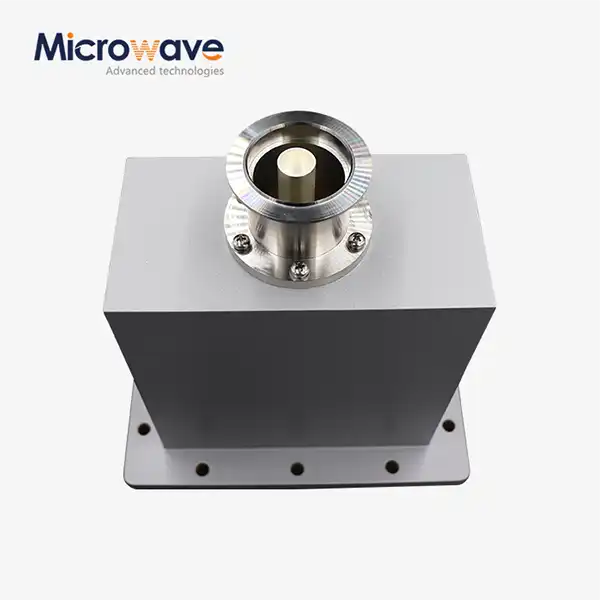 VIEW MOREEnd Launch Waveguide to Coaxial Adapter
VIEW MOREEnd Launch Waveguide to Coaxial Adapter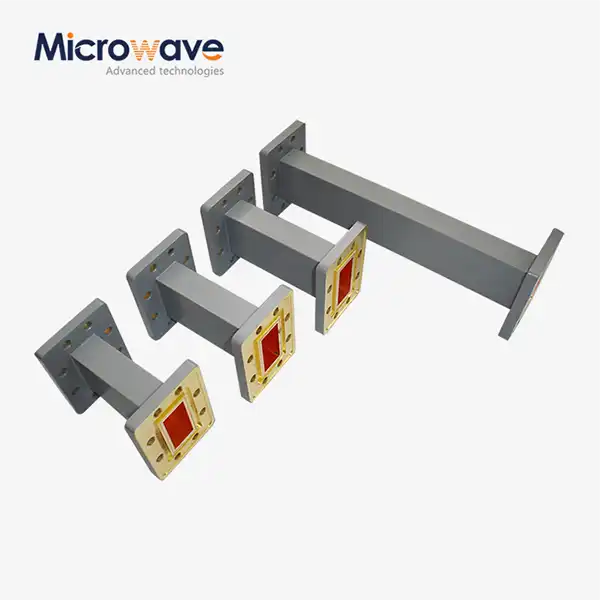 VIEW MORERectangular Straight Waveguide
VIEW MORERectangular Straight Waveguide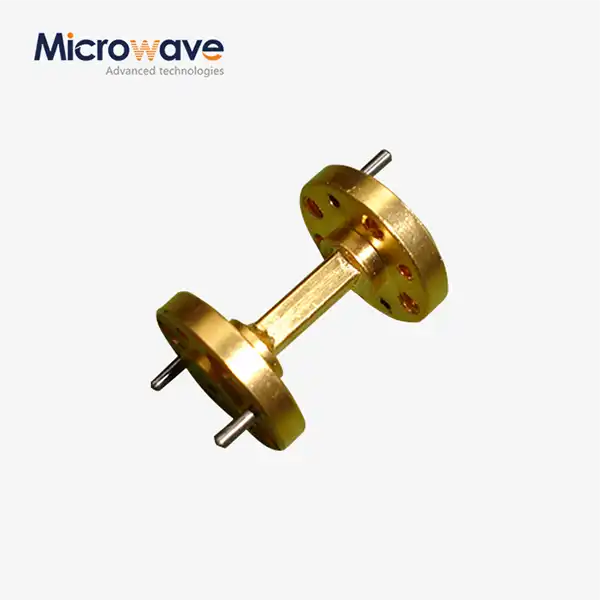 VIEW MORECircular Straight Waveguide
VIEW MORECircular Straight Waveguide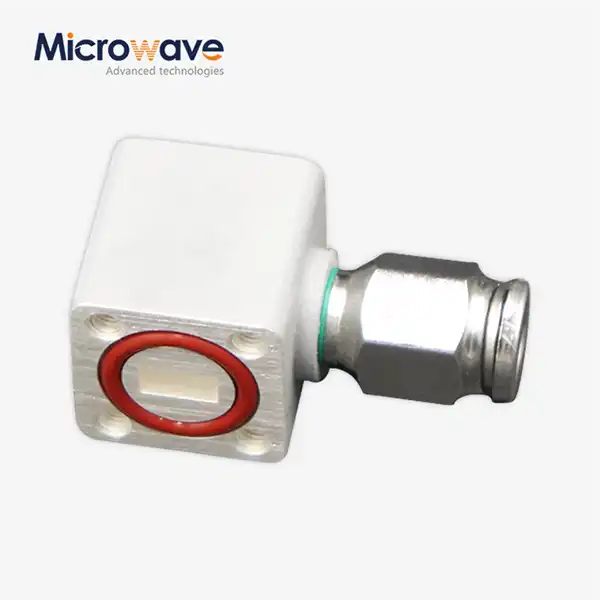 VIEW MOREInflatable Straight Waveguide
VIEW MOREInflatable Straight Waveguide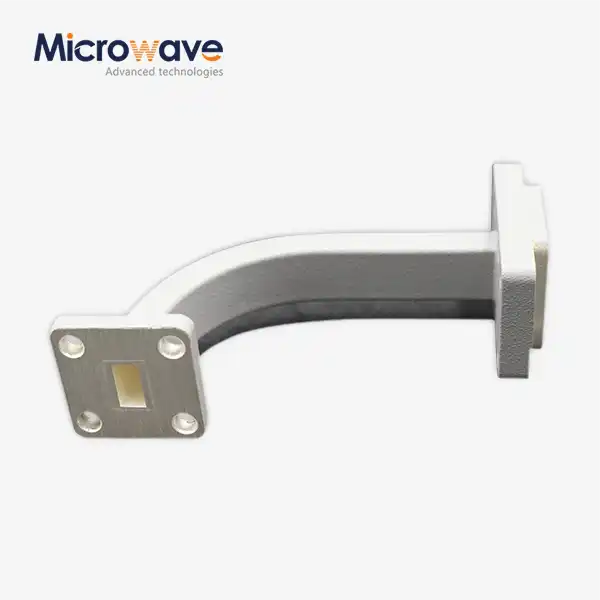 VIEW MOREWaveguide E Bend
VIEW MOREWaveguide E Bend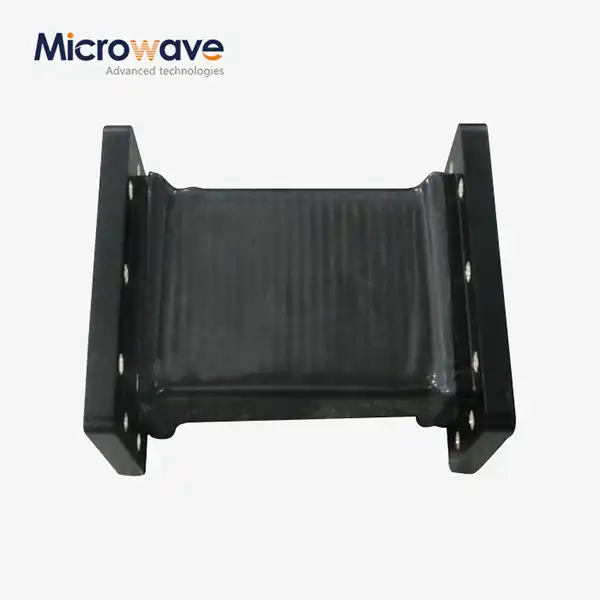 VIEW MOREFlexible Seamless Waveguide
VIEW MOREFlexible Seamless Waveguide VIEW MORERight Angle Waveguide To Coaxial Adapter
VIEW MORERight Angle Waveguide To Coaxial Adapter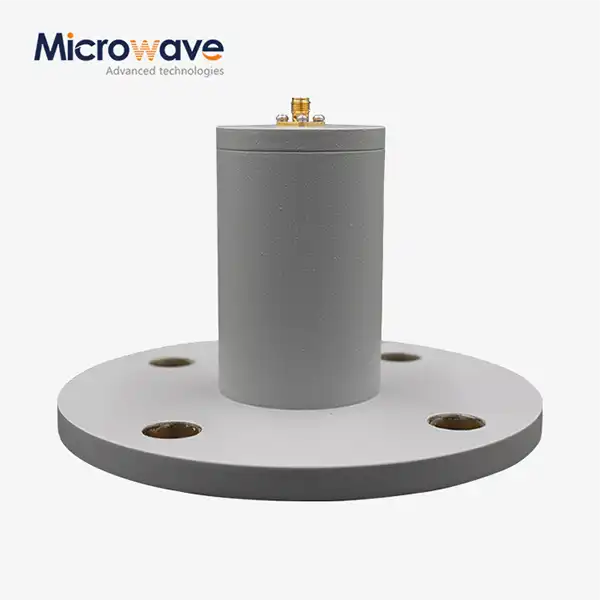 VIEW MORECircular Waveguide To Coaxial Adapter
VIEW MORECircular Waveguide To Coaxial Adapter




